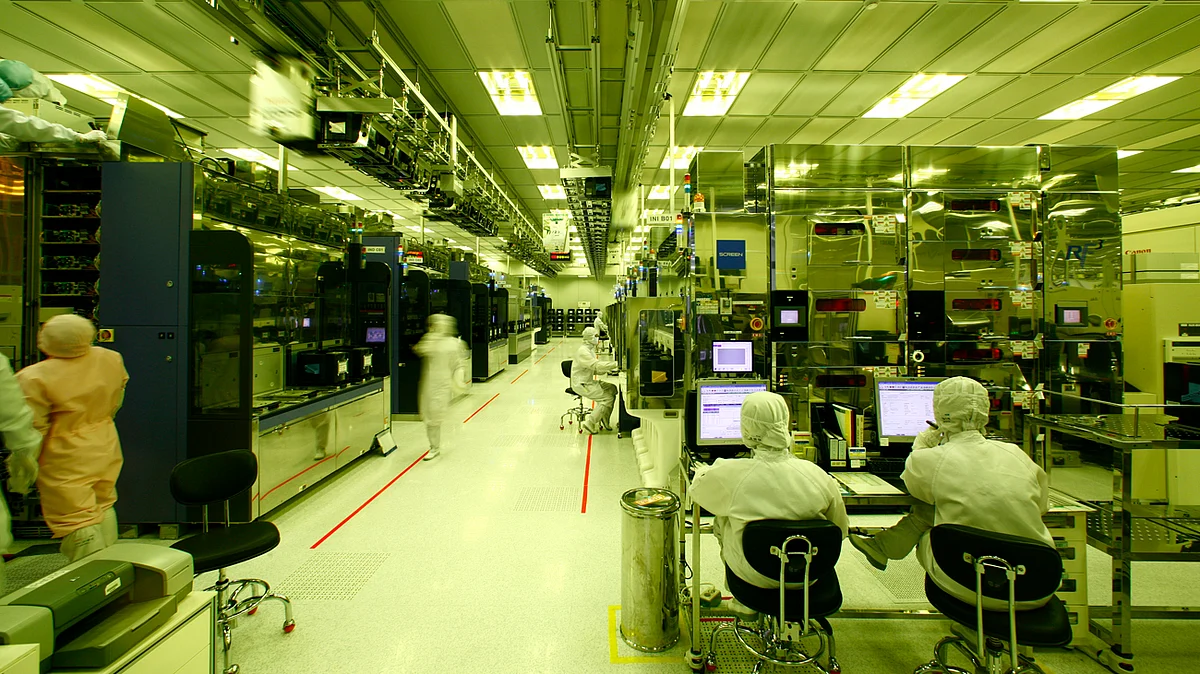US starves China of electronic chips, scuttles its tech ambitions
The US has dominance on the machinery used to manufacture semiconductors. China has been merely the end-user in this value chain, buying semiconductors to be put into its equipment

China's ambition to lead the world in digital technology by 2030 is hopelessly dependent on the US, Europe, Taiwan and South Korea. These countries have a virtual monopoly over design and manufacture of semiconductors, the brains in any electronic equipment.
Donald Trump understood this and choked off its supplies to China; Joe Biden has continued with the policy with even greater hawkishness. While US companies dominate semiconductor design (fabless manufacturing), Taiwan has a 50% share of foundries where chips are manufactured from the designs.
Companies like Intel, Apple, Samsung have the entire process from the design of the chips to the manufacture of the end product. The US also has dominance on the machinery that foundries use to manufacture semiconductors. China has been merely the end-user in this value chain, buying semiconductors to be put into its equipment. However, the shortage of chips has now forced Huawei to scale down its mobile manufacturing plans and threatens its 5G business.
China has tried and failed to make its own semiconductors. It has announced massive investments in this sector, but it's not easy to develop competencies in semiconductor manufacturing. It is entirely IP-driven and this is where China does not have an edge.
Recently China’s ambitions to become self-sufficient in the production of chipsets were dealt a serious blow with the closure of a state-backed semiconductor plant. Wuhan Hongxin Semiconductor Manufacturing Co (HSMC) was forced to let go of all of its staff, according to local press reports, a clear sign that the troubled company is shutting up shop.
Staff at the plant received a WeChat message asking them to resign, making it clear that there are no plans to restart production, the South China Morning Post reported, citing information shared by Caixin Media. The $18.5 billion project, HSMC has been beset by problems pretty much since it opened for business in late 2017, and funding issues drove it into the ground last year. It was taken over by the local government at the back end of last year, but it now appears it is closing for good.
US trade sanctions introduced by Donald Trump and maintained by Joe Biden have erected an insurmountable wall between Huawei and Taiwan Semiconductor Manufacturing Company (TSMC) of Taiwan. Huawei was responsible for about $5.4 billion of TSMC's revenues in 2019, roughly a seventh of the total.
The US ban means that any chipmaker reliant on American technology cannot sell to Huawei without incurring the wrath of US authorities. As a major client of US firms like Applied Materials, which produce chipmaking equipment, TSMC is subject to the ban.
While the loss of such a big customer is bad news for TSMC, the effective blockade is nothing short of an existential threat to Huawei. HiSilicon, its own chips business, designs the components used in Huawei's gadgets and network equipment and is far less dependent on US technology than Western rivals such as Nokia.
But HiSilicon does not make chips. Those are crunched out by TSMC, and alternatives are as hard to find as a Chinese Communist Party (CCP) libertarian. The consequence, experts agree, is that Huawei is running out of chips.
Meanwhile, the world's largest semiconductor manufacturer TSMC plans on opening six new manufacturing plants in the US. The first plant will be based in Arizona at an investment of $12 billion. Construction is expected to begin later this year, and the facility will supposedly manufacture 12-inch (300mm) wafers. Intel too has a similar plan to stay in the race which it was losing to Nvidia.
This is the choke point that is witnessing the latest US-China conflict and explains why Taiwan has such an oversized role in global technology business and geopolitics.
Can India play catch up?
Without the semiconductor chips, no electronic good or Artificial Intelligence will work. Only a few thousand scientists in the world have the expertise needed and it is a long haul for India.
India is offering more than $1 billion in cash to each semiconductor company that sets up manufacturing units in the country as it seeks to build on its smartphone assembly industry and strengthen its electronics supply chain.
Keen to incentivize and attract investments for setting up of semiconductor FABs in India, the government has issued Expression of Interest (EoI) for setting up/expansion of existing semiconductor wafer/ device fabrication (FAB) facilities in the country or even acquisition of semiconductor FABs outside India.
Setting up semiconductor FAB facilities and its ecosystem was one of the main strategies of the National Policy on Electronics 2019 (NPE 2019) that aims to position India as a global hub for Electronics System Design and Manufacturing (ESDM). India is expected to import semiconductor chips worth IN ₹187,200 crores (approximately US $26.38 billion) from a IN ₹3,621,600 crore (approximately US $510.25 billion) market worldwide in 2020.
The Government of India invited expressions of interest (EoI) towards the end of 2020, and actively following up with manufacturers like Taiwan Semiconductor Manufacturing Company, VIA Technologies Inc., United Microelectronics Corporation, Intel, Micron Technology, Inc., NXP Semiconductors, and Texas Instruments, Fuji Electric Co. Panasonic, and Infineon.
India has two fabs — Society for Integrated Circuit Technology and Applied Research (SITAR), a unit of the Defence Research and Development Organisation (DRDO) in Bengaluru and a semiconductor laboratory in Chandigarh, which build silicon chips for strategic purposes like defence and space and not for commercial use. Semiconductor fabs need investment starting around $8 billion, and the numbers climb rapidly upwards. They have very heavy running costs, and technology needs to be upgraded typically every 3-4 years.
Follow us on: Facebook, Twitter, Google News, Instagram
Join our official telegram channel (@nationalherald) and stay updated with the latest headlines